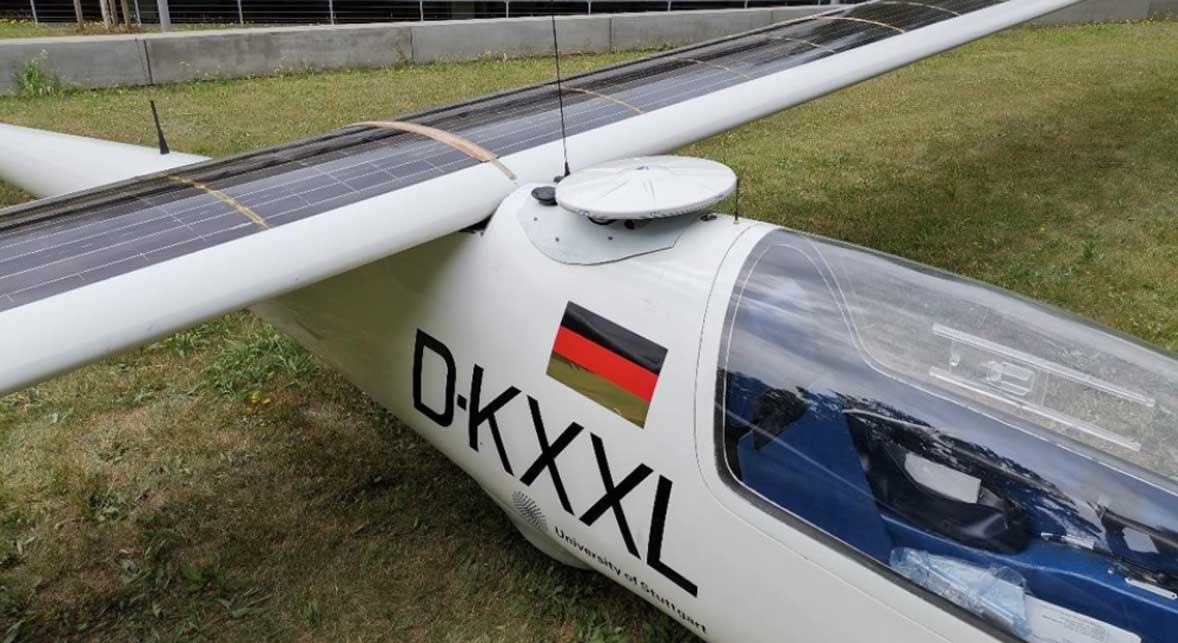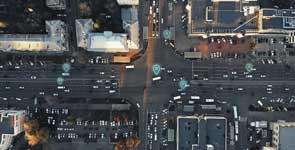Navigation technology for air taxi tested with solar aircraft
- Details
- Hits: 5586
The solar airplane glides quietly and easily Icare across quantities in the district of Sigmaringen. The University of Stuttgart tests with high precision in a flying laboratory Navigation technology. The scientists collect data for navigation and flight control. With this one would like to get a little closer to autonomous flying, as it is in one air taxi can be found.

Contents
Precise GPS system on board
The Institute for Aircraft Construction is working on this project IFB, the Institute for Flight Mechanics and Flight Control IFR and the Institute for Navigation INS zusammen.
The solar plane lays around on three flight days in August 80 km back. It's up to for that two hours continuously in the air. Next Solar cells and propellers on the wing tips, a GPS antenna is included behind the cockpit. The antenna measures the position of the aircraft to an accuracy of 1 cm.

In comparison, GPS systems in cars or cell phones are much less accurate with an accuracy of 3 to 5 m. With the help of the antenna, centimeter-accurate reference trajectories or Trajectories of all flights can be determined.
To measure the flight attitude and position, the researchers use among other things fiber optic gyro systems, so-called IMUs. They are installed in the interior of the aircraft. "Put simply, a top is a three-dimensional spirit level that works in all directions," explains John Schneider, research assistant at the Institute for Aircraft Construction. “The gyro systems measure whether the pilot is rolling, leaning or yawing and the intensity with which the aircraft is moving. In addition, by integrating all measured movements of the IMUs, conclusions can be drawn about the position of the aircraft in space. "
 Self-driving cars from the perspective of an automotive supplier
Self-driving cars from the perspective of an automotive supplier
Develop software for flying taxis
The devices to be examined differ mainly in their precision. The measurements allow different systems to be compared with one another and to determine how well the individual devices are working. The researchers want to use the data Find algorithmswhich compensate for the inaccuracy of a device - especially with regard to the long-term and short-term stability of the IMUs. The scientists at the Institute for Navigation are developing software for this purpose.
Based on the results, autonomous flying should also be made safer and more reliable in the future. "The so-called Urban Air Mobility (UAM) with the help of small air taxis (Personal Air Vehicles) is currently a lot of talk ”, says Mr. Schneider. “Small aircraft for two to four passengers are being developed that will also fly autonomously in the future. To do this, the flying taxi must know its exact position at all times.
 Location technology standard Omlox with UWB, RFID, 5G, GPS
Location technology standard Omlox with UWB, RFID, 5G, GPS
Tests of the wing propeller for yaw control
Professor Andreas Strohmayer from IFB and Professor Walter Fichter from the IFR and their teams have also continued flight tests with wing-end propellers for yaw control. The institutes jointly developed these in 2019 and tested them for the first time. The pilots checked new IFR control algorithms. These facilitate the coordinated flying of curves and automatically reduce the sliding angle.
General technical knowledge
Icarè is a solar aircraft that the Faculty of Aerospace Technology at the University of Stuttgart has been calling for almost 25 years testbed operates. The employees carried out the three-day test flights on the newly created test field eFiegenBW at the airport in Mengen.
